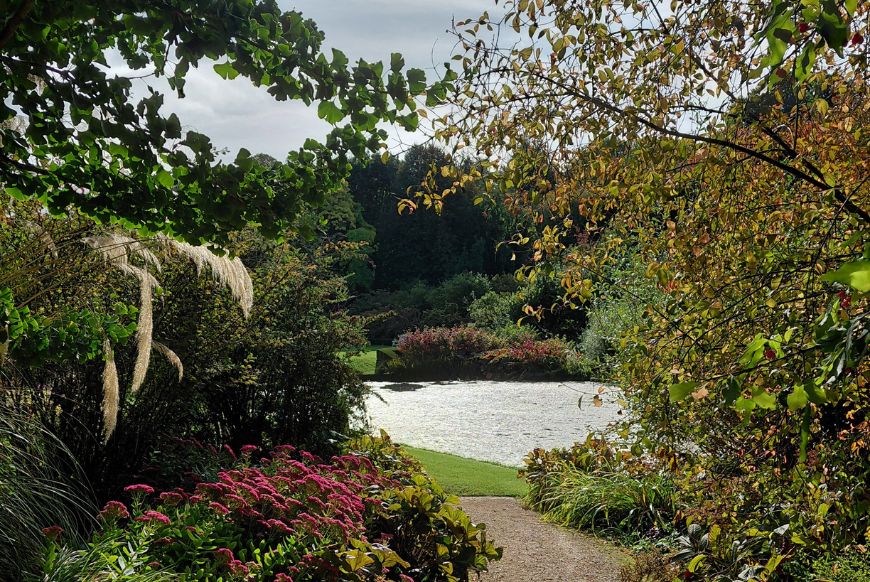A long, vibrant autumn is on the horizon at National Trust gardens, woodlands and parklands across the South West, with rich colours and bountiful berries expected to delight visitors and wildlife alike.
Experts say a sun-drenched summer followed by welcome rain has set the stage for a spectacular seasonal display—despite early signs of a ‘false autumn’ triggered by drought.
Many gardeners and countryside managers agree autumn arrived swiftly, as though someone had ‘flicked a switch’, but predict a gradual build of colour to wow visitors. And the signs are good for wildlife, too, with widespread reports of abundant acorns, fungi and berries in gardens and the countryside.
John Deakin, Head of Trees and Woodland at the National Trust said: “Autumn is such a pivotal moment in the calendar, shorter days combined with normally cooler temperatures and changes to rainfall patterns all contributing to the vivid sylvan scenes of ochres, oranges, red and yellows we associate and love with the season.
“In recent years with the climate becoming more unpredictable, it’s become even trickier to predict autumn colour. However, this year with the combination of reasonably widespread rainfall in September and a particularly settled spring we should hopefully see a prolonged period of trees moving into senescence – ie the gradual breakdown of chlorophyll in leaves which leads to the revealing of other pigments that give leaves their autumn colour, as well as a bounty of nuts and berries.”
At Dyrham Park near Bath, the meadow is inundated with waxcap fungi and other species. Piers Horry, Garden & Countryside Manager said: “Now’s also a great time to see some glorious ‘bracket’ fungi on trees, like bright red ‘beefsteak fungus’ and bright yellow ‘chicken of the woods”. They feel more noticeable this year and as the leaves come off the trees, you can really enjoy their colours.
The cosmos in the garden are “still going strong” and “should last all the way up to when the beds are changed after October half-term.” He added that some trees have gone into autumn colour early, especially horse chestnuts, but nevertheless anticipates “quite a long, colourful autumn, with different stages and not all trees going at once.”
Like many Trust places, the park at Dyrham, has an abundance of acorns this year which the park’s deer herd has been ‘gorging on’, especially along the path to the mansion.
Many Trust experts also agree we are in a ‘mast year’, a phenomenon occurring around once every four years, in which certain tree species produce unusually high numbers of nuts and berries.
Early autumn storms, like Storm Amy at the weekend, are thought unlikely to affect autumn displays. An ‘abscission layer’ at the base of leaves controls when they drop, meaning that trees which are a long way from losing their leaves should still hang on and change colour. Trees in full leaf, however, can be more vulnerable to limb drop.

At Stourhead in Wiltshire, long celebrated for its autumn displays, Gardens and Countryside Manager Tim Parker thinks we’ll see a gradual build to autumn, unlike last year when the colours seemed to ‘all collide’ during October half-term. Some trees did drop leaves early due to heat stress but he thinks the landscape is still on track to peak in the last week of October or first week of November.
Tim said: “Autumn is a particularly special time here and visitors really do get twice the seasonal effect, thanks to the reflections in the lake. We’re already seeing early performers like the katsura tree turning buttery yellow and there is some acer colour – and there’s plenty more to come.
“The wet spring and dry summer, along with high sugar content in the leaves, should give us rich, vibrant colour.”
.jpg)
Related
Comments
Comments are disabled for this post.











